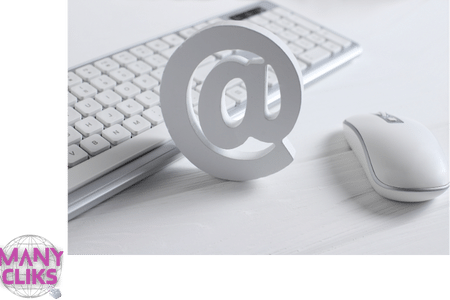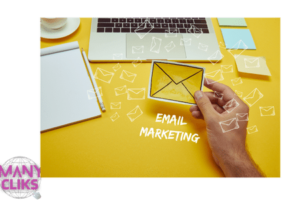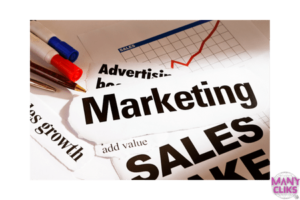
Welcome to the guide to email marketing for your business. Where competition is fierce and attention spans are short, marketing has emerged as a powerful tool to engage with your audience, drive sales, and build long-lasting relationships. But what does the future hold for this marketing channel? How can you leverage its potential to maximize your sales impact? Get ready to embark on an exciting journey as we dive deep into the world of email marketing, exploring its future, personalization strategies, automation benefits, different types of campaigns, and the keys to creating effective marketing campaigns that yield remarkable results.
Summary of Content
1: The Future of Email Marketing
The future of marketing holds immense potential and promises exciting advancements. As technology continues to evolve, so does the way we connect with our audience through email. But what does the future hold for this powerful marketing tool?
From advancements in AI-powered personalization to the rise of interactive and immersive experiences, the future holds limitless possibilities for engaging your audience and driving conversions. Click here
2: Email Marketing on Your Sales
Are you ready to supercharge your sales with marketing? Email marketing has the power to significantly impact your sales and drive business growth. When implemented effectively, it can be a valuable tool to engage with your audience, nurture leads, and convert prospects into loyal customers. But how can you ensure that your email marketing efforts have a positive impact on your sales?
Dive into this section to uncover the undeniable impact of marketing on your bottom line. Discover how personalized and targeted campaigns can drive engagement, nurture leads, and boost your conversion rates. With real-world examples of successful email marketing strategies, you’ll gain valuable insights into the power of this marketing channel to drive sales growth. Click here to learn more.
3: Personalization in Your Email Marketing
First, start by collecting relevant data about your subscribers. This can include their demographics, purchase history, browsing behavior, and preferences. Use this data to segment your email list into smaller groups with similar characteristics and interests. By doing so, you can send targeted that resonate with each segment, addressing their specific needs and offering relevant solutions.
One-size-fits-all marketing is a thing of the past. In this section, we explore the art of personalization in email marketing. Learn how to create tailored and relevant content that resonates with your audience, captures their attention, and drives action. Discover the power of segmentation, dynamic content, and behavioral targeting to deliver personalized experiences that convert. Click here.
4: Benefits of Email Marketing Automation
Email marketing automation offers numerous benefits that can significantly enhance your marketing efforts and drive success for your business. By automating repetitive tasks and streamlining your campaigns, you can save time, improve efficiency, and achieve better results. But what specific benefits does marketing automation bring to the table?
Imagine having your campaigns run on autopilot while you focus on growing your business. In this section, we delve into the benefits of email marketing automation. From triggered emails to drip campaigns, automation allows you to deliver timely and relevant messages to your subscribers, nurture leads, and drive conversions at scale. Explore the advantages of automation and learn how to implement it effectively in your marketing strategy. Click here to more.
5: Types – Email Marketing
When it comes to marketing, understanding the different types of campaigns available can help you effectively reach your audience and achieve your marketing objectives. Let’s explore five common types of email marketing campaigns and how they can contribute to your success.
In this section, we explore the different types of email marketing campaigns. From newsletters to welcome, promotional campaigns to re-engagement strategies, you’ll gain insights into how each type can be used to engage your audience and drive desired actions. Click here to explore.
6: How to Create an Effective Email Marketing Campaign
Ready to create impactful email marketing campaigns that drive results? In this section, we provide a comprehensive guide on how to craft effective campaigns from start to finish. From setting clear goals and defining your target audience to designing compelling content and optimizing for deliverability, we’ll walk you through each step of the process. Click here to learn .
Conclusion:

Throughout this journey, you have gained valuable insights, tools, and strategies that can propel your email campaigns to new levels of success. From crafting compelling subject lines that grab attention to segmenting your audience for personalized content, this guide has equipped you with the essential ingredients for achieving remarkable results.
However, it’s important to recognize that success in marketing is not an overnight achievement. It requires dedication, perseverance, and a commitment to continuous improvement. The key is to embrace the journey and adapt to the ever-changing landscape of email marketing. Experiment with different approaches, analyze the data, and refine your strategies based on the insights you gather.
Remember, the power of email marketing lies in its ability to engage your audience, drive conversions, and fuel business growth. By consistently measuring and optimizing your campaigns, you’ll witness the transformative impact it can have on your bottom line. So, don’t be afraid to take risks, think outside the box, and explore innovative ways to connect with your subscribers. With each step forward, you’ll be one step closer to unlocking the full potential of email marketing and achieving remarkable success.
But success doesn’t come overnight. It requires dedication, experimentation, and constant refinement. Embrace the journey, adapt to the ever-changing landscape, and continuously measure and optimize your campaigns. With each step forward, you’ll witness the transformative power of email marketing as it engages your audience, boosts conversions, and propels your business growth to new heights.
Frequently Asked Questions:
- Have you ever wondered if robots will take over our email inboxes, or if there are exciting developments in store for the future of digital marketing? Explore the possibilities that lie ahead in the realm of email marketing and uncover the potential for innovation and advancement.
- Furthermore, have you ever questioned the impact of a simple email on your sales? Discover the hidden secrets behind email marketing’s undeniable influence on your bottom line. Uncover how personalized email campaigns can revolutionize your customer experience, allowing your favorite brands to anticipate and fulfill your every need.
- Are you tired of spending countless hours crafting individual emails? Take a deep dive into the world of email marketing automation and unlock the power of efficiency and personalization. Explore how automation can streamline your processes and provide a tailored experience for each recipient.
- But wait, is there more to email marketing than just newsletters? Delve into the vast universe of email campaigns and uncover exciting strategies that will captivate your audience and leave them craving more. Unveil the secrets of crafting captivating emails that drive engagement and conversions, paving the way for remarkable success.
10 – Tips Email Marketing Strategy:
- Know Your Audience: Understand your target audience’s preferences, needs, and pain points to deliver personalized and relevant content.
- Craft Compelling Subject Lines: Grab attention with enticing subject lines that pique curiosity and entice recipients to open your emails.
- Segment Your Email List: Divide your subscriber base into distinct groups based on demographics, interests, or engagement levels. Tailor your messages accordingly for better engagement.
- Use Engaging Visuals: Incorporate eye-catching visuals, such as images or videos, to make your emails visually appealing and captivating.
- Provide Valuable Content: Offer valuable information, tips, or exclusive offers in your emails to keep subscribers engaged and eager to open future messages.
- Optimize for Mobile: Ensure your emails are mobile-friendly and optimized for various devices, as a significant portion of users access emails on their smartphones.
- Test and Optimize: Experiment with different email elements, such as subject lines, CTAs, or layout designs, and analyze the results to refine and improve your campaigns.
- Implement A/B Testing: Split test different variations of your emails to identify what resonates best with your audience and drives higher open and click-through rates.
- Personalize and Automate: Leverage automation tools to deliver personalized emails triggered by specific actions or milestones, creating a more tailored experience for each subscriber.
- Monitor Metrics and Analytics: Track important metrics like open rates, click-through rates, and conversion rates to evaluate the effectiveness of your campaigns and make data-driven decisions for improvement.
10 – Trends and Innovations
- AI-Powered Personalization: Harnessing the capabilities of artificial intelligence and machine learning algorithms to deliver highly personalized and tailored content in digital messages. This technology analyzes user behavior and preferences to provide relevant recommendations and suggestions.
- Interactive Messaging: Incorporating interactive elements within digital messages to increase engagement and encourage user participation. This can include features like quizzes, polls, surveys, and interactive carousels that create a more immersive and interactive experience for recipients.
- Dark Mode Optimization: Adapting the design and layout of digital messages to ensure optimal visibility and readability for users who prefer dark mode. This trend acknowledges the increasing popularity of dark mode across various platforms and ensures that messages are easily legible in this viewing mode.
- Hyper-Personalization: Going beyond basic personalization by dynamically customizing digital messages based on individual user data, such as location, past purchase history, or browsing behavior. This level of personalization creates a tailored experience that resonates with recipients and enhances engagement.
- Mobile-First Design: Designing digital messages with a mobile-first approach to prioritize seamless viewing and functionality on smartphones and tablets. As mobile usage continues to dominate, optimizing messages for mobile devices ensures a positive user experience and maximum reach.
- User-Generated Content: Incorporating user-generated content, such as social media posts, customer reviews, or testimonials, into digital messages. This strategy adds authenticity, social proof, and builds trust with the audience, as they see real people sharing their experiences.
- Automation and Workflows: Implementing automated messaging workflows to deliver targeted and timely messages based on specific triggers or customer journeys. This streamlines the customer experience and ensures that the right message reaches the right person at the right time.
- Behavioral Segmentation: Segmenting the recipient list based on user behavior, such as past purchases, website interactions, or engagement levels, to deliver more relevant and targeted content. This segmentation allows for more personalized messaging that addresses specific needs and interests.
- Digital Message Accessibility: Ensuring that digital messages are accessible to individuals with disabilities by following accessibility guidelines and utilizing alt text for images. This inclusive approach allows everyone to engage with the content, regardless of their abilities.
- Advanced Analytics and Reporting: Utilizing advanced analytics tools to gain deeper insights into the performance of digital messages, engagement metrics, and conversion tracking. These insights enable data-driven decision-making, allowing marketers to optimize their messaging strategies for better results.
10 – Fascinating Facts:
- Remarkable Return on Investment: Among all marketing channels, email marketing boasts the highest return on investment (ROI), averaging at an impressive 4,400%. This signifies the effectiveness and profitability of email campaigns for businesses.
- Wide Accessibility: With over half of the world’s population using email, it has become a universally accessible communication medium. This widespread adoption makes email an ideal channel for businesses to connect with their target audience and deliver their messages effectively.
- Superior Customer Acquisition: When it comes to acquiring new customers, email outperforms social media platforms like Facebook and Twitter by a significant margin. In fact, email is 40 times more effective in acquiring new customers, making it a powerful tool for expanding a customer base.
- Personalization for Impact: Personalized subject lines in emails can make a substantial difference in open rates, increasing them by 50%. By tailoring subject lines to resonate with individual recipients, businesses can capture their attention and entice them to engage with the content.
- Optimal Timing: While the best time to send emails may vary depending on the target audience, studies have shown that Tuesday and Thursday tend to yield higher open and click-through rates. This insight can guide businesses in optimizing their email delivery timing for maximum engagement.
- Mobile Dominance: Mobile devices account for more than 60% of email opens, highlighting the significance of mobile-friendly email designs and responsive templates. To ensure a seamless user experience, businesses should prioritize mobile optimization in their email marketing strategies.
- Automation for Efficiency: Email marketing automation is a valuable resource that can save businesses time and resources. By automating repetitive tasks and delivering personalized messages triggered by specific actions or events, businesses can nurture leads and drive conversions more efficiently.
- Segmenting for Success: Segmented email campaigns, which deliver targeted content to specific audience segments, enjoy higher open rates and click-through rates compared to non-segmented campaigns. Segmenting allows businesses to provide more relevant content, increasing engagement and driving desired actions.
- Data-Driven Optimization: A/B testing, also known as split testing, is a powerful technique in email marketing. By comparing different versions of emails and analyzing the results, businesses can optimize their campaigns for better outcomes, making data-driven decisions to enhance their effectiveness.
- Valuable Analytics and Insights: Email marketing provides businesses with essential analytics and insights to evaluate campaign performance. Tracking metrics such as open rates, click-through rates, and conversion rates enables businesses to measure success, identify areas for improvement, and make informed decisions based on data.
Tools and Resources:
- Email Marketing Platforms: Popular platforms like Mailchimp, Constant Contact, and Sendinblue provide robust features for creating, managing, and automating email campaigns.
- Marketing Automation Software: Tools like HubSpot, ActiveCampaign, and Marketo offer advanced automation capabilities, allowing marketers to create personalized workflows and trigger emails based on specific actions or events.
- Email Analytics Tools: Platforms such as Google Analytics, Mailchimp’s Analytics, and Litmus provide insights into email performance, including open rates, click-through rates, conversions, and subscriber engagement.
- Email Testing and Optimization Tools: Services like Litmus and Email on Acid help marketers test and optimize their email designs across various email clients, devices, and browsers for consistent rendering and optimal user experience.
- Email Subject Line Analyzers: Tools like CoSchedule’s Email Subject Line Tester and SubjectLine.com analyze subject lines for effectiveness, providing suggestions to improve open rates and engagement.
- Email List Management Tools: Platforms like Mailchimp, ConvertKit, and AWeber enable marketers to segment their email lists, manage subscriber preferences, and ensure compliance with email marketing regulations.
- Landing Page Builders: Tools such as Unbounce, Instapage, and Leadpages allow marketers to create customized landing pages with clear calls-to-action, improving conversion rates from email campaigns.
- Email Design Templates: Websites like Canva, BEE Free, and EmailOctopus offer pre-designed email templates that are visually appealing, responsive, and easy to customize.
- Email Deliverability Tools: Services like GlockApps and SendForensics help identify and resolve issues that may impact email deliverability, ensuring that messages reach subscribers’ inboxes.
- Email Marketing Plugins: Platforms like WordPress have plugins such as OptinMonster, WPForms, and Sumo that integrate with email marketing platforms and provide features like pop-ups, opt-in forms, and lead generation.



